It has been a medical challenge to treat COVID comprehensively in all patients!
In Feb 2021, the second wave of COVID-19 struck India. Everyday around 0.1 to 0.3 million cases were getting diagnosed in India with COVID-19 and about 3000 were dying. But this Wave 2 of COVID-19 pandemic has been really a disaster for this country. The best-known institutes saw their own best doctors succumbing to this viral holocaust.
Now, the cases are coming down and Wave 2 seems to be losing its grip, atleast in India. But the virus will keep mutating and new waves will keep coming. If we can’t stop the virus from spreading and creating new waves on infection, we need to atleast figure out how to prevent infected ones from dying.
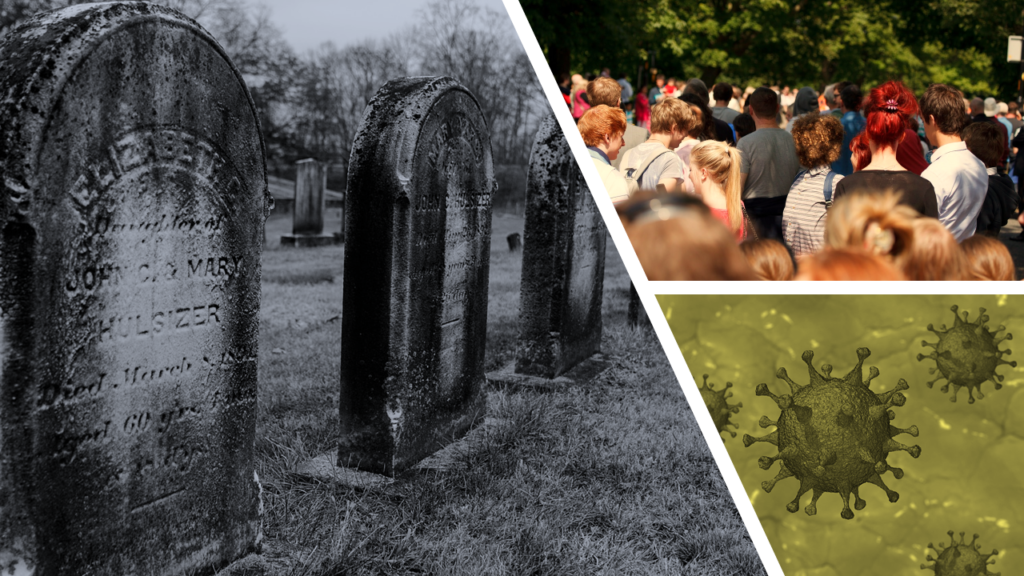
We know that more 90% of those infected with COVID-19 virus in this wave easily recover without any complications. Less than 10% develop complications and require hospitalization.[1] Issue is, there is no way to predict who will be that unlucky 10%. Age and comorbidities might be contributory factors. But if you are young and healthy, still there is no guarantee that you won’t require hospitalization. And once you are in hospital, there is no guarantee that you will survive. Around 10% of hospitalized patients don’t survive.
What it means is- the primary aim of treatment should be to prevent COVID-19 from becoming a severe disease requiring hospitalization. It is very easy to aspire for this aim- but is this really possible?
Few months back I faced a situation where 20 members of my family were infected with COVID-19. 12 members of this group were elderly (>65 years age), 4 with relatively uncontrolled diabetes mellitus and 1 undergoing chemotherapy. There were several severe constraints that further complicated the matter- we had minimal access to any investigations or hospitals. Although the whole situation was really scary, we all came out of it unscathed. No one required hospitalization. I have documented this incidence in detail, in another article.
I am no expert physician and have limited knowledge about COVID-19 like any other physician. But that scary encounter with COVID-19 was actually a steep learning experience for me. It really made me understand how we can possibly treat COVID infected patient effectively, irrespective of any comorbidities, and prevent the patient from deteriorating into severe situations. I have now a system which I use for treating COVID-19 and I have been quite successful in that. I used this system for treating 49 patients till now- I have been lucky that none of these patients deteriorated and all recovered smoothly.
In this post, I will explain in detail this treatment approach that I use to treat COVID. My hope is that many doctors might find this approach useful. At the end of this article, I will also share the protocol that I have developed. Eventually if this treatment approach really helps patients recover from COVID-19 without complications, it will be a great outcome of this article
Table of Contents
Science Driven Treatment Approach to Treat COVID
The COVID-19 virus and the disease caused by it still remains an enigma. Every day we keep learning new facts about COVID-19. However, the clinical course is pretty much clear now. We do know to a large extend how this virus enters human body, how it interacts with our immune system and how these interactions determine the ultimate outcome of the disease. It is this knowledge that is really the foundation driving my treatment approach.

I will try to explain how the disease starts and progresses and what happens with each stage of progression. This will eventually allow readers to easily understand why what medicine should be used at which stage, and how few medicines can be useless or even harmful if timed incorrectly.
From the time when virus first enters the host, the whole disease course can be divided into two major periods: The Viral Replication Period and The Inflammatory Period[2]
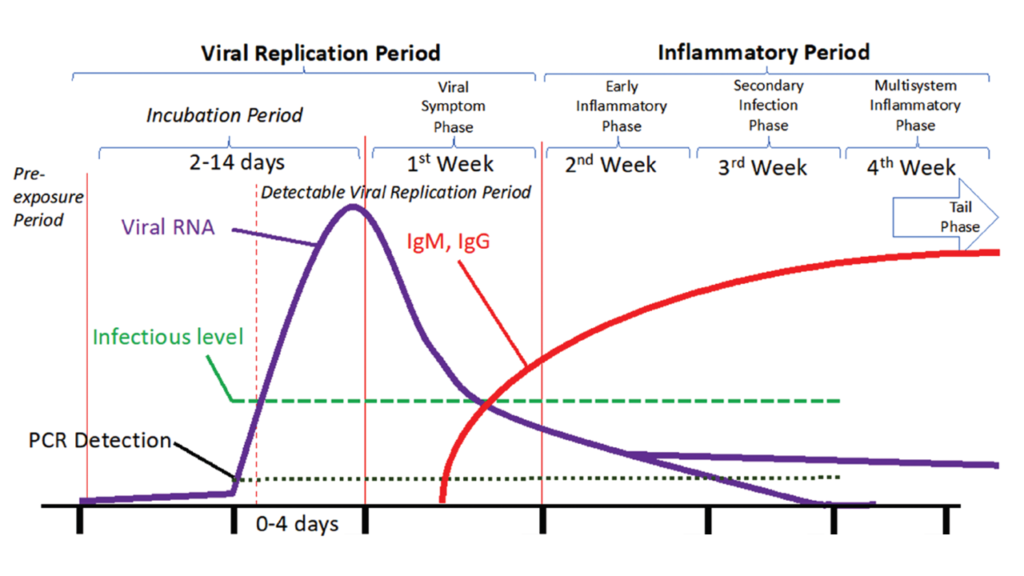
1. Viral Replication Period
This period begins when the COVID-19 virus gains entry into your body. I won’t get into the details of mechanism. The virus particles invade cells of respiratory tract. Each virus particle then uses the infected cell’s machinery to create more viruses. These daughter viruses then come out of that cell and start infecting other cells. This whole process of one virus becoming many viruses and infecting increasingly large number of cells is known as viral replication.
Viral replication period can be further divided into two phases: Incubation Period and Viral Symptom Phase
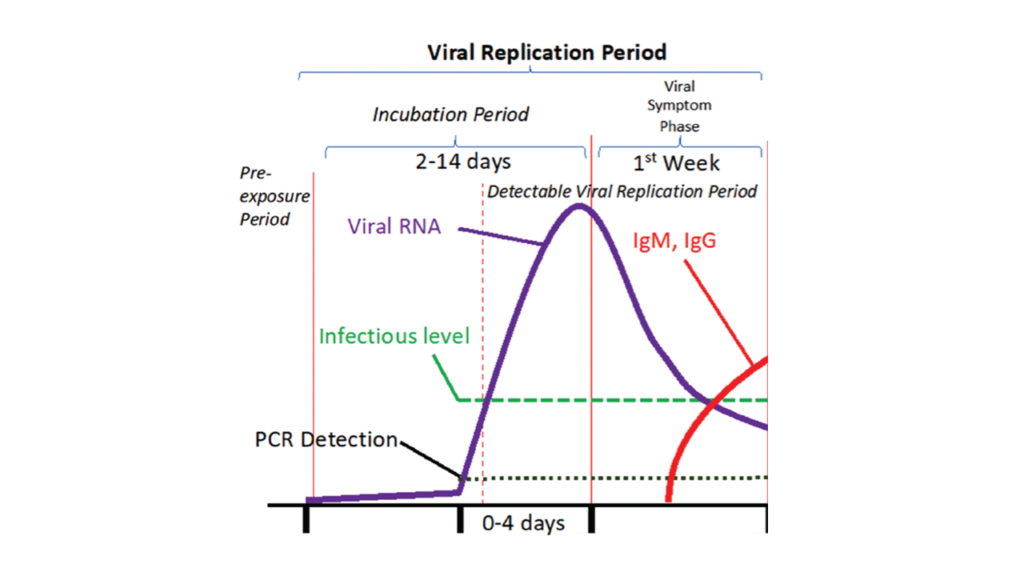
a) Incubation Period
For initial few days while the virus is replicating, the infected person won’t have any symptoms. This initial symptomless phase while the virus has gained entry and is replicating is known as “incubation period”. The length of incubation period varies from one person to another. In some it can be as short as 2 days, in few it can be as long as 14 days.
If you know one is in incubation period, using antivirals might be a great idea. It might significantly decrease the viral load and make the entire disease course mild. But it’s generally impossible to discover if somebody is in incubation period unless there is high suspicion of significant contact with a known patient. From practical stand, I don’t think it’s prudent to start any medicine before symptoms begin. However, there are studies showing role of few medicines such as ivermectin at this stage as prophylaxis. It’s still controversial though[3]
b)Viral Symptom Phase
The end of incubation period is marked by appearance of first symptoms.
The day when the symptoms first appear is the most important day for any patient and clinician from treatment perspective. This day should be marked as ‘DAY 1”.
The most common symptoms displayed by most patients include loss of sense of smell/taste, fever, cough, fatigue, muscle soreness, joint pains, headache, diarrhea, shortness of breath. Of course, a patient will generally have one or more of these symptoms and not all [4][5]. And around 12% patients remain asymptomatic throughout. [5] Such asymptomatic patients need no medications anyways.
Viral Symptom Phase generally lasts for a week.[2] In this phase, it’s important to allow your immune system to work optimally and eliminate the virus.[6] One might boost this virus elimination by introducing antivirals such a Favipiravir.[7] Ivermectin has also been found useful in suppressing viral activity.[8][9] Similarly, Azithromycin and Doxycycline have been reported to have beneficial effects. [10][11][14]
But what is critical to remember is not to introduce any immune suppressive drugs like corticosteroids at this stage. This will allow virus to replicate uninhibited and might lead to worsening of the disease.[12]
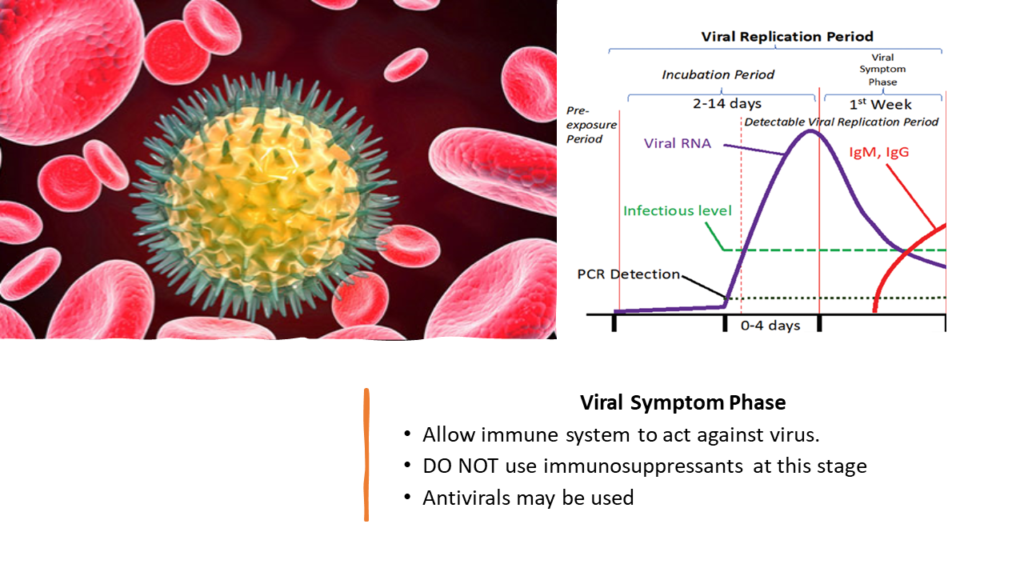
2. Inflammatory Period
Inflammatory period starts from around Day 7- 8 after the appearance of first symptoms. This period lasts for about 3 weeks and can be subdivided into 3 phases- Early Inflammatory Phase, Secondary Infection Phase and Multisystem Inflammatory Phase.
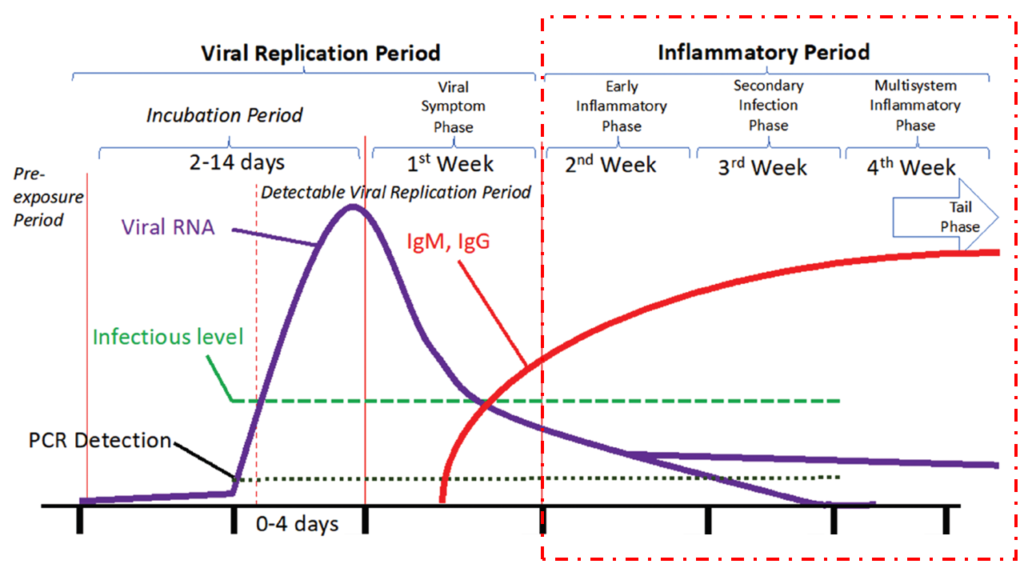
a) Early Inflammatory Phase
This phase exists from Day 7- 8 after the appearance of first symptoms to around Day 14- 15. This second week is the most important period in this disease. What happens during this period and the decisions taken by the clinicians during this period will determine if the patient will survive or not. Actually, majority (more than 90%) will survive this period even without any intervention by any clinician. But the scary part is, there is no way anyone can predict who will progress into that unfortunate 10% zone where hospitalization is needed and eventually might not survive.
This is the period when viral replication is no longer happening, and viral load is generally very low. Virus generally gets adequately controlled by the end of Viral Symptom Phase. But the immune system, which was directed towards killing the virus, is still active and activity keeps going higher.
In majority cases this immune activity, although very high, remains under a certain limit. But in few (around 10%) cases, this limit is crossed. In such unfortunate patients the immune system acts like a mad mercenary who just won’t stop firing. But now there are no viruses to be killed, but only the normal cells of the lungs. If not controlled, the lungs can collapse, and other vital organs will also start getting impacted. This is what we call as cytokine storm and this is exactly what causes deaths.
It’s not the virus, but our own immune system that leads to disaster. Hence, to treat COVID, it is critical to ensure that the immune system system not over- reacting.
Hence, here antivirals, Ivermectin, Azithromycin/Doxycycline etc. generally have no role to play. What definitely works here are immunosuppressive drugs such as corticosteroids. Should they be used in all patients? Definitely not. But one must remember that once the cytokine storm starts, its generally difficult for corticosteroids to act and control. It’s generally a matter of chance if they will work adequately. This has been observed in other conditions as well such as bronchial asthma. Corticosteroids are good at preventing an asthma attack if given before the attack starts. But once asthma attack has started, corticosteroids generally don’t work.[13] So, if corticosteroids are needed, its dangerous to delay.
Hence, from Day 7 or Day 8 one has be on guard to look out for the earliest signs of deterioration. One of the red flags is continuation of fever or appearance of fever on Day 7 and beyond. This is a good enough indicator to immediately start corticosteroids, and then check blood CRP, D-Dimers, LDH and Ferritin levels to confirm what’s happening. Other red flags are breathlessness or resting heart- rate >100 per minute on or beyond Day 7.
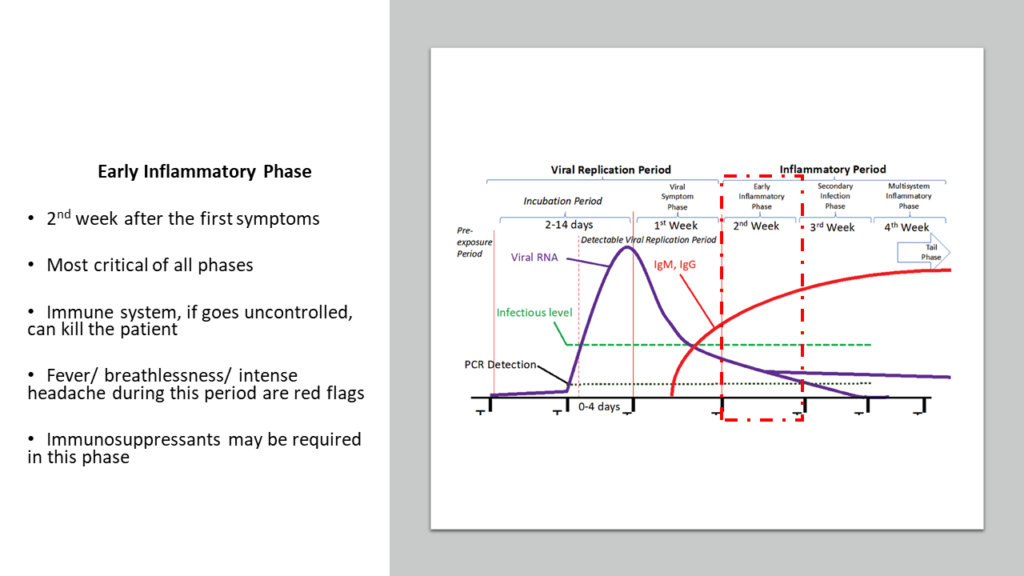
b) Secondary Infection Phase
This phase lasts from Day 14- 15 to Day 21, where secondary bacterial/fungal infections start appearing. This is because COVID-19 weakens the immune system. One may now ponder why I am saying COVID-19 weakens immune system while in the previous point it has been mentioned that immune activity is increased. I won’t go into detailed explanation here- but high immune activity doesn’t mean that immune system is healthy. Excessive activation of immune system actually weakens it. To understand in detail what I mean, you may read click here.
c) Multisystem Inflammatory Phase
This the final fourth week post the appearance of first symptoms. To be fair, this phase can continue for months. This phase is the result of continuous ongoing activity of immune response resulting in a state of constant inflammation. COVID-19 causes immune system to become so reactive that it takes a long time for the immune system to really calm down to its original normal.
It is this constant inflammation that results in prolonged weakness, continued loss of smell/taste etc. How long and how severe this phase will be, depends on how severe was your disease during Week 2. In some, the ongoing inflammation can be high enough to cause critical arteries to become narrow and cause blood to clot leading to episodes of stroke, heart attack etc. months after infection. Continued inflammation may alter various organ systems including heart, liver, kidneys, brain and can lead to various troublesome manifestations for several months. Some experts call it as “Long COVID”.
Hence, in lot of patients, it might be prudent to proactively control this inflammation by introducing blood thinners such as aspirin and clopidogrel and use drugs like statins for their anti- inflammatory properties.
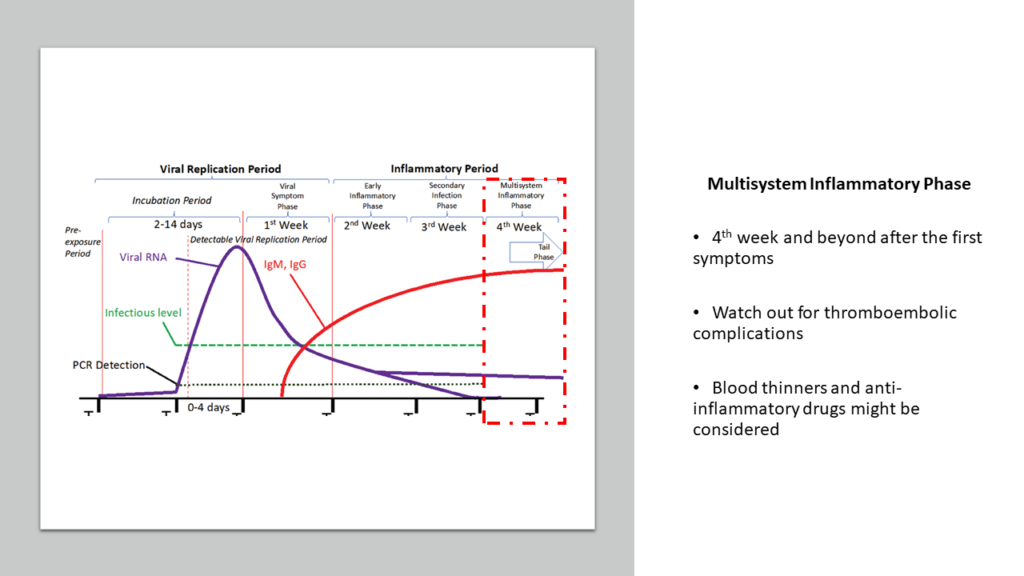
Also, during the second week many patients may have taken immune suppressive drugs like corticosteroids. This also might allow secondary infections to proliferate.
So, one needs to watch out for these infections and be careful.
But, if you are out of the second week and still at home healthy, you are out of danger for sure. Yes, there is this scare of dreaded fungal infections such as mucormycosis which have very high mortality rates. But, if you are not hospitalized, have taken just a short 7- 10 days course of corticosteroids, and have kept blood sugar under control, most probably you are safe. I generally advise gargles with lukewarm water mixed with salt at least 3 times daily throughout the disease course of COVID-19 to keep at least oral region disinfected to some extent. If you want to learn about Mucormycosis in detail, please click here.
The Protocol That Helped Me Treat COVID And Save Lives
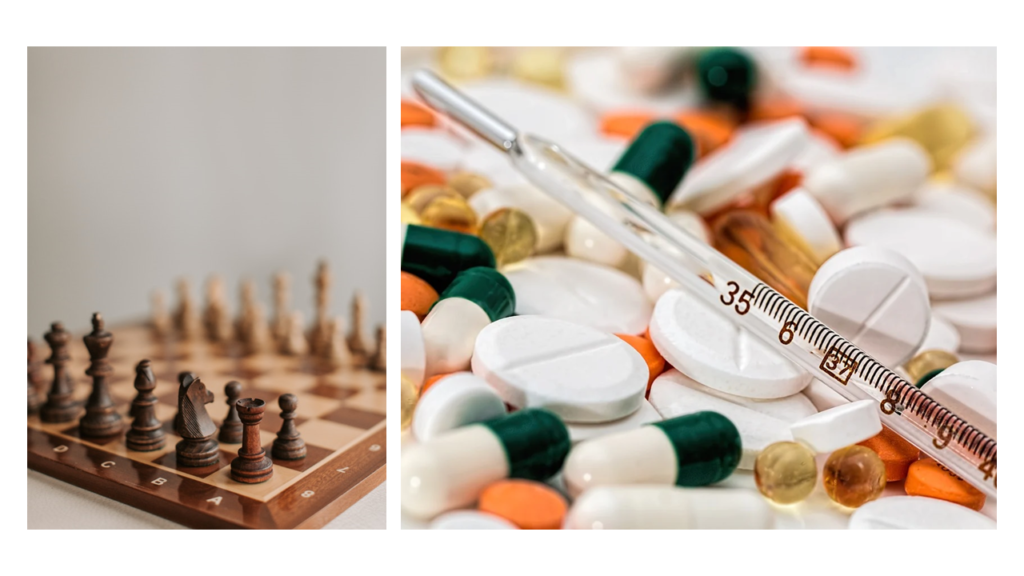
Based on the science I described above, I developed a protocol that helps me guide my decision making while treating patients with COVID-19. This protocol has been framework that I have used in successfully treating 49 patients till now.
Please do note that while I am sharing this protocol here for everyone’s benefit, the treatment should be administered only by a registered medical practitioner. Also, this protocol is just a guidance- any doctor using this protocol must use his medical judgement based on his knowledge and clinical findings.
How to Treat COVID- Concluding Remarks
I hope this post will be useful to a lot of doctors in developing a framework for treating COVID-19 patients successfully. I have tried to keep the explanations simple enough so that even a layman can understand the science behind how treat COVID.
The protocol I have shared to treat COVID is based on whatever knowledge I could gather from the latest published research regarding combined with my own clinical observations. But science is evolving rapidly and everyday we are learning more about this virus. I am sure I will have to alter this protocol to treat COVID, as new data emerges. Till then, this remains the guiding framework for me to treat COVID patients. Let me know your thoughts on this. I would love to hear your feedbacks/criticisms, and would try my best to reply objectively.

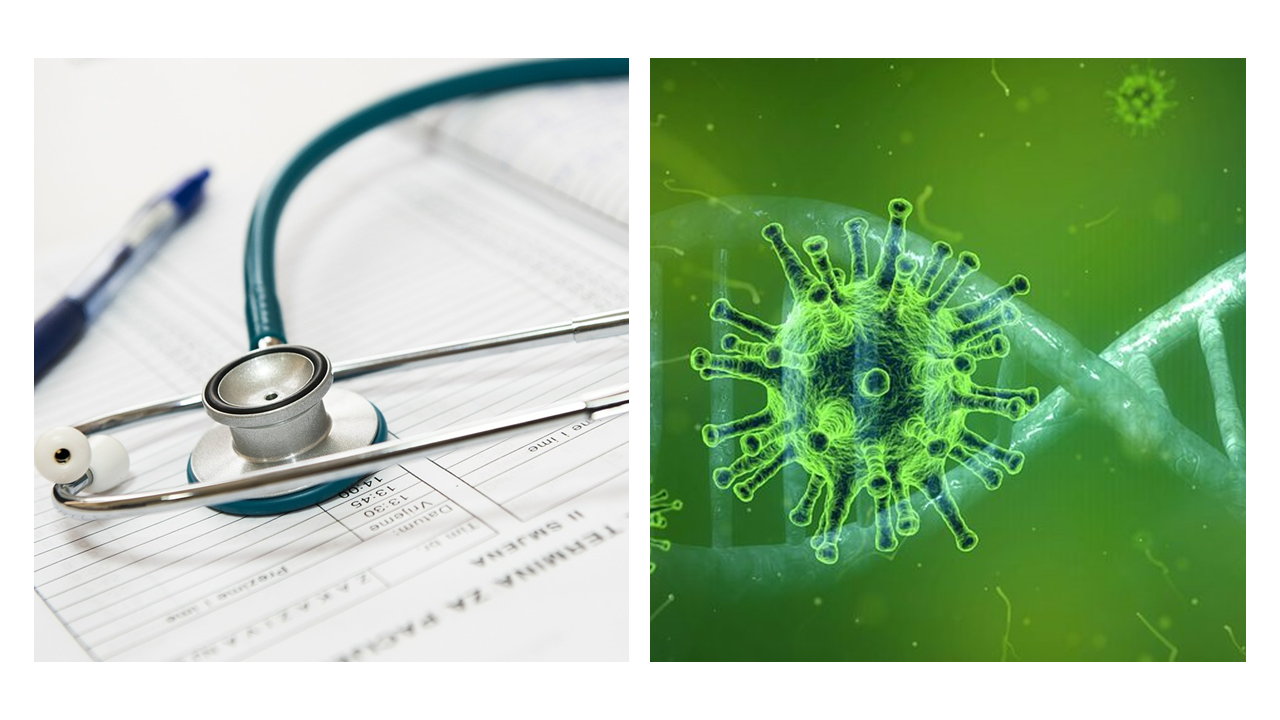



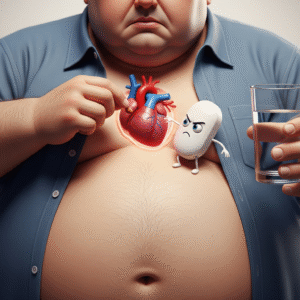
Very comprehensive and lucid analysis.
Thank You! Glad that you found my article useful!
F*ckin’ tremendous issues here. I’m very glad to see your post. Thank you a lot and i’m looking forward to contact you. Will you please drop me a mail?
I am glad that you found this post useful!
WONDERFUL Post.thanks for share..more wait .. …
I am glad that you liked my post
I am extremely impressed with your writing skills and also with the layout on your blog. Is this a paid theme or did you customize it yourself? Either way keep up the excellent quality writing, it’s rare to see a great blog like this one today..
Thank you for your kind words!
Good – I should definitely pronounce, impressed with your site. I had no trouble navigating through all the tabs and related information ended up being truly easy to do to access. I recently found what I hoped for before you know it in the least. Reasonably unusual. Is likely to appreciate it for those who add forums or something, website theme . a tones way for your client to communicate. Nice task.
Hello there, simply turned into alert to your blog through Google, and found that it is really informative. I’m going to watch out for brussels. I’ll be grateful should you continue this in future. A lot of people will be benefited from your writing. Cheers!
Thank you!
I agree with your point of view, your article has given me a lot of help and benefited me a lot. Thanks. Hope you continue to write such excellent articles.
Reading your article helped me a lot and I agree with you. But I still have some doubts, can you clarify for me? I’ll keep an eye out for your answers.
For my thesis, I consulted a lot of information, read your article made me feel a lot, benefited me a lot from it, thank you for your help. Thanks!
Thanks for sharing. I read many of your blog posts, cool, your blog is very good.
Your article helped me a lot, is there any more related content? Thanks!
Thanks for a marvelous posting! I truly enjoyed reading it, you can be a great author.I will remember to bookmark your blog and definitely will come back down the road. I want to encourage that you continue your great work, have a nice weekend!
Really Appreciate this article, is there any way I can get an update sent in an email every time you publish a fresh update?
Good info. Lucky me I reach on your website by accident, I bookmarked it.